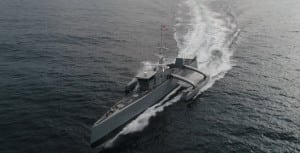
The Navy’s top unmanned systems official emphasized this week the service is testing different acquisition strategies while it looks to take various autonomy pieces for a larger library and not be locked into a single vendor. While the Navy started acquiring unmanned surface vessels (USVs) and unmanned undersea vessels (UUVs) as prototypes that came with a particular vendor’s autonomy system or control system, it is now moving towards the new unmanned campaign plan framework. That means disaggregating common problems, solving…

 By
By 











